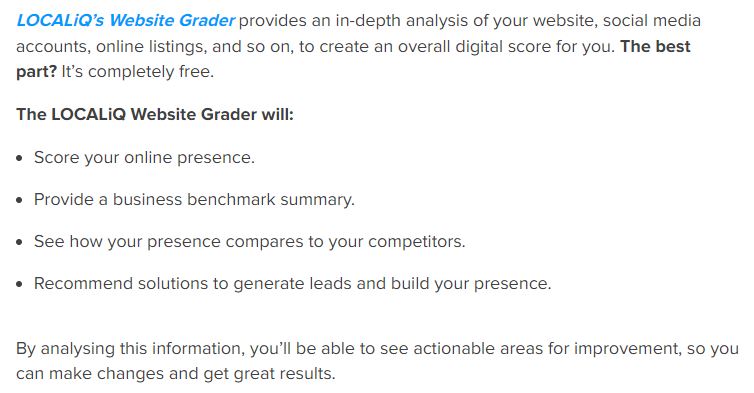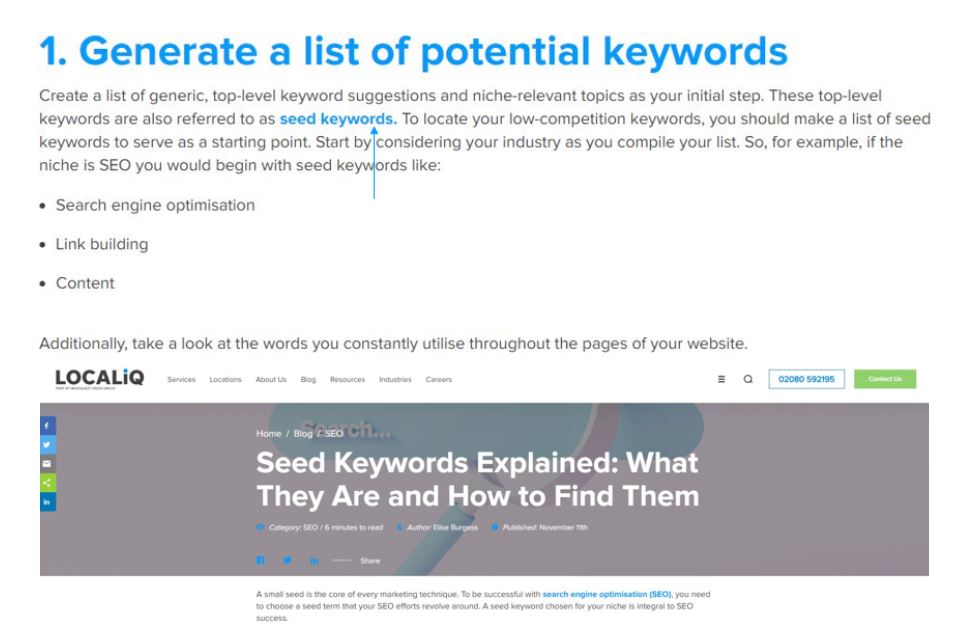Anchor text is a given source of information and is an integral part of any search engine optimisation (SEO) strategy. That’s why anchor text is extremely important and should not be overlooked.
This blog aims to provide you with a comprehensive overview of everything you need to know and will discuss its importance.
In this blog, you’ll learn:
- What is anchor text?
- Why is anchor text important?
- The different types of anchor text
- Anchor text best practices for SEO
What is anchor text?
Anchor text is the text that appears in a hyperlink that can be clicked. It makes it possible for users to navigate from one web page to another. In order for users to understand that it can be clicked on, anchor text is usually stylised to make it stand out from the rest of the text. Often the colour will differ from normal text, and other style options can be implemented, such as underlining.
Besides helping users navigate your site, they also help Google’s algorithm determine your content’s relevance.
Some basic code is created when you create a hyperlink on a webpage. The code looks like this:

Search engines like Google can see this aspect of your website and can determine which link to follow. This is how the above would appear to regular website users:

This link will then direct users to the specified page when they click it.
Why is anchor text important?
Anchor text provides contextual information to customers and search engines. Clicking on a link will lead the user to another relevant web page or blog. As for search engines, they use anchor text to help with indexing and ranking web pages.
Anchor text is an essential component of your SEO strategy because it influences both your on-page and off-page SEO efforts as well as user experience.
The different types of anchor text
There are a few different types of anchor text you can utilise, it’s best to become familiar with them so that you can choose the appropriate ones based on the context and goal.
1. Generic anchor text
Generic anchors don’t contain any words that are associated with a particular keyword.
With generic anchor text, the audience is usually instructed to do something by the phrases employed. As a result, the majority of people utilise them as a call to action (CTA) to grab attention.
Example use of generic anchor text:
Click here to get all the information you need about digital marketing.
There is no connection between the phrase “click here” and the remaining text. However, it grabs your attention and commands you to take action. Despite being great for encouraging action, these links are not helpful for web crawlers to understand the link’s context.
2. Branded anchor text
Branded anchors work exceptionally well for generating credibility since it shares a brand’s name and uses it to build authority.
For example:
Using branded anchor text tells Google that you’re pointing towards other premium tools and services, this is another secure and efficient strategy to develop a stronger anchor profile.
3. Exact match anchor text
Exact match anchor text specifies a keyword that the target webpage is aiming to rank for. As an example, paid social directs users to a page that details LOCALiQ’s paid social services.
This is one way to make use of exact-match anchor text but be careful not to overdo it! By not being careful, you risk activating Google’s spam filter and suffering the consequences of spamming.
4. Partial match keywords anchor text
Partial match uses a keyword variation from the linked-to page as the anchor text. For instance, “content marketing agency for UK SMEs” connects to a content marketing page.
5. Related keywords anchor text
Similar to partial match anchor text, related keyword anchor text does not contain the keyword itself. This kind of anchor text is an excellent approach to giving context to the page you’re connecting to, without overusing the same keyword,
For example:
Learn how to implement on-page SEO strategies.
The focus keyword here would be “website navigation best practices”, but on-page SEO is related to the topic of website navigation.
6. Phrase match anchor text
This type of anchor text contains a phrase your website is trying to rank for. Using the display advertising example again, those who are not very skilled in this area of marketing might seek a quicker and more simple approach. Therefore, they could be searching for “A Beginner’s Guide to Display Advertising.”
7. Naked link anchor text
The URL of the target page is all that is included in naked anchor text. Consider the following as an example. With LOCALiQ, you can learn more about the advantages and disadvantages of display advertising: localiq.co.uk/blog/display/the-advantages-and-disadvantages-of-display-advertising
A naked link anchor text is not very effective at explaining the content of the linked page and often appears spammy. For that reason, it is only permitted to use naked anchor text at the bottom of articles that cite their sources.
8. Image anchor text
When using an image as a link, the alt text of that image will be considered its anchor text. Therefore, even if the image doesn’t load, the anchor text can still be clicked. Alt text should be descriptive and refrain from using too many keywords, much like standard anchor text.
Because it must describe what is in the image, and, on occasion, the reason why the image is included in the context in the first place, alt text tends to be longer than your typical anchor text.
Anchor text best practices for SEO
After learning about the different types of anchor text, it’s now time to examine how to optimise your anchor text for search engines.
1. Verify the relevance of your anchor text
Relevant anchor text aids Google in understanding the structure of your website. Using anchor text also makes it appear more natural to your readers, increasing the likelihood that they will click on it. That’s because Google and regular users examine the anchor text to determine the purpose of online pages.
Consider which terms would produce the most natural experience whilst choosing your vocabulary.
Here’s an example of anchor text that describes the type of page users will see after clicking the link “seed keywords.”
In this instance, someone is already reading a blog about low-competition keywords. The reader would also benefit from being directed to a blog on a different type of keyword.
2. Ensure your anchor text is not overly optimised
It’s best to keep anchor text as brief as you can. Ideally, five words or less should be the limit for anchor text. For best results, utilise a variety of anchor text options. This will make it appear much more natural, as using too much exact match anchor text can be penalised by Google.
Tip: Instead of over-optimising your anchor text and keyword-stuffing your content, create helpful, engaging content first, and then add links as and when needed!
3. Focus on the surrounding text
Readers can better comprehend the context of your link by reading the text that appears around the anchor text. Additionally, it gives search engines more context too.
When evaluating your page, Google will also review the text surrounding the anchor text.
For example:
The anchor text ‘Local Consumer Review Survey 2023’ has no real meaning by itself.
The whole sentence, however, informs readers (and Google) that the anchor text is relevant to Google customer reviews:
“According to Local Consumer Review Survey 2023, 77% of consumers either always or regularly read online reviews when browsing for local business.”
As a result, based on the context of the preceding phrases, Google is better able to determine what the linked text is about.
4. Fill image alt tags with appropriate keywords
There are various uses for alt tags with images:
- Provide information about the image and the page it is connected to so that Google crawlers can comprehend what is it.
- Assist people with visual impairments in understanding the image better.
- Fill the role of anchor text links.
Use descriptive terms in the image alt tags if you’re using images with links. It should include natural language within the sentence; avoid stuffing the text with keywords.
5. Think about accessibility
Finally, while styling your anchor text, consider your users. All links should be distinct from the rest of your writing. Users won’t click on your links if you use colours that are hard to read or are too similar to the colour of the rest of your content.
To conclude, every great SEO strategy must include optimised anchor text. Both the visibility and ranking of your website can be enhanced by using it properly. Just be careful to avoid over-optimising your anchor text, as this can result in Google penalties. You should now have a better understanding of anchor text and its suggested best practices.
If you require any further SEO guidance, then why not contact a LOCALiQ professional? Our team of SEO experts are experienced in delivering high-performing SEO strategies for businesses.









